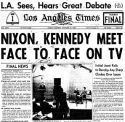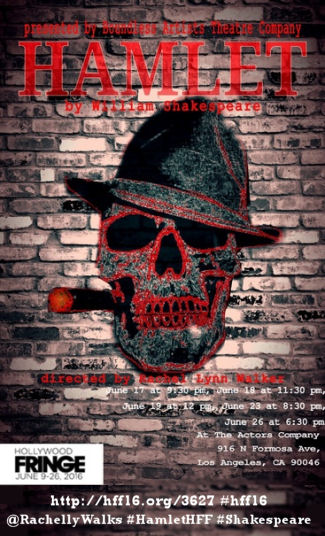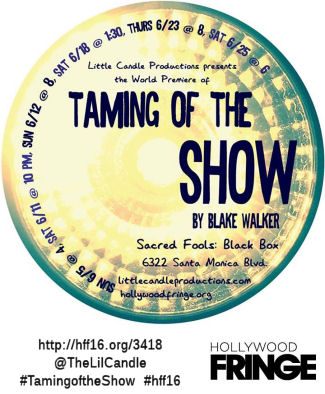 I’m still working on clearing out the links that accumulated during the Hollywood Fringe Festival (FB), with a goal of getting them all done before you take off for the Fourth of July weekend. I may already be too late. Here’s a chunk that are loosely related to science, medicine, and technology:
I’m still working on clearing out the links that accumulated during the Hollywood Fringe Festival (FB), with a goal of getting them all done before you take off for the Fourth of July weekend. I may already be too late. Here’s a chunk that are loosely related to science, medicine, and technology:
Medicine Chum
- Understanding Migraines. One of the ills that plague me are migraines (which, luckily for me, are mild compared to what others get). No one knows precisely what triggers migraines, or how the various abortives work. Some think it is related to nerves in the head, and some think it is related to blood flow. A new genome-wide association study published in Nature Genetics suggests that a migraine may primarily stem from problems with the blood supply system. This could lead to new ways to treat migraines.
- More Than Human. We’re discovering more and more than the human organism is much more than the human organism — that is, much of what contributes to our health or lack thereof is our microbiome. Further, our overfocus on being “germ-free” has significantly hurt our biome, and may be the single largest contributor to our various health maladies — including obesity. Here’s another biome story — this time, the involvement of the biome with what has been called Chronic Fatigue Syndrome. Specifcally, researchers say they’ve found biological markers of the illness in the blood and gut bacteria of people with systemic exertional intolerance disease (SEID) (a/k/a CFS). Their results were published in the journal Microbiome. In this study, found clear differences between the blood and guts of healthy versus sick people. Compared to healthy controls, people with ME/CFS had weaker and less diverse bacterial ecosystems in their guts, as well as higher levels of immune inflammation in their blood. These differences were so clear that the researchers were able to spot nearly 83 percent of the time which participants had ME/CFS just by looking at their bacterial and immune response results.
- Being Like Everyone Else. If everyone else did something with no proven medical benefit for medical reasons (like, for example, overusing bacterial soap), would you do it? A study that is unsurprisingly proving very viral on social networks is highlighting one such thing: most women these days are “preparing for the Olympics” for claimed medical benefit, when there is none (where “preparing for the Olympics” == “going Brazilian” == removing hair on their … == insert your own euphemism here). My attitude, for whatever it is worth, is that women are their most beautiful when they look like women — not airbrushed models or pre-pubescent girls — but women – with imperfections and hair and some parts large and some parts small and some parts inbetween. While we’re on that subject (and while we’re clearing links), here’s an article I found on two-piece suits for large chested ladies. What bothered me about that article is that the chest was the only part that was large. Why weren’t there two-pieces for ladies who happened to be large in other places as well? As it is, an article like that is just perpetuating body dismorphic ideas, just like shaving everywhere does.
- How Old is Your Body? I’m 56. Recently, I’ve been wondering if there is any part of my body that has been with me all 56 years. So I was quite pleased to see an article come across my feeds that asked the same question: How old is your body? What component of your body has been around the longest time? For example: brand new fingernails every six months, 2-7 years for the hair on our heads, new skeletal muscles every 15 years. But those neurons in your brain? Never replaced.
Technology Chum
- Automotive Security. We were having a discussion on our van this morning about car security, specifically how some thieves are collecting automotive RFID signals, and then going around parking lots broadcasting them, unlocking cars, and stealing stuff inside. I had noted how cars are generally better protected against theft, and how entertainment units are less likely to be stolen than radios of old. Another rider pointed out, however, that the keyless ignition cars are easier to steal. In general, our cars are weak in terms of security — so it is good at the Senator is pushing to increase cybersecurity protections in cars.
- LED Streetlight Dangers. More and more cities are going to LED streetlights because they use less energy and are brighter. Now the AMA has come out with some cautions on LED lighting: cool it and dim it. The AMA’s statement recommends that outdoor lighting at night, particularly street lighting, should have a color temperature of no greater than 3000 Kelvin (K). Color temperature (CT) is a measure of the spectral content of light from a source; how much blue, green, yellow and red there is in it. A higher CT rating generally means greater blue content, and the whiter the light appears. The new “white” LED street lighting which is rapidly being retrofitted in cities throughout the country has two problems, according to the AMA. The first is discomfort and glare. Because LED light is so concentrated and has high blue content, it can cause severe glare, resulting in pupillary constriction in the eyes. Blue light scatters more in the human eye than the longer wavelengths of yellow and red, and sufficient levels can damage the retina. This can cause problems seeing clearly for safe driving or walking at night. It can also affect our sleep cycles and rhythms (which is why many people recommend using f.lux to turn down the blue on your screens in the evening).
- Tweaking Your Facebook Feed. Many of us who came from LJ miss the days of a sequential feed, where you know you could catch up on your friends. Facebook has never been quite the same. But Facebook is now providing some details on how to tweak your feed. First, they’ve disclosed their news feed algorithm, which will now show posts from friends higher up in the feed than posts from Pages like news outlets. Based on these new values, there are now some specific tweaks that you can do to make your newsfeed what you want it to be.
Science Chum
- Lift Me Up. You might have heard about the helium shortage. That shortage may be going away, as scientists have discovered new Helium resources, and new ways to extract it. That’s good news, as helium is a vital nobel gas (used in much more than balloons), and there is not an easy way to make more.
- Drill Me Down. Scientists also believe they have found new water supplies in the central valley of California, albeit at a deeper depth and with greater salinity. Will this solve California’s drought? I doubt it.
Science People In the News
- New Position: Steve Isakowitz. The Aerospace Corporation (my employer) has announced the selection of a new corporate President and soon-to-be CEO: Steve Isakowitz, former President of Virgin Galactic. Iskowitz is also a former CTO of Virgin Galactic. Previously, he held a wide variety of senior engineering, business, and management roles across the private and government sectors, including positions at NASA, the Office of Management and Budget, the Intelligence Community, and the Department of Energy. He replaces Wanda Austin, who has reached the corporate age limit for VPs and above.
- Passing: Simon Ramo. Simon Ramo, the “R” in TRW, has passed away. Ramo shaped California aerospace and the space industry through organizations like TRW, and I should note that he is responsible for the company I work at: The Aerospace Corporation is actually an FFRDC spin-off of STL, Space Technology Laboratories, which went on to become TRW.
- Passing: Steve Walker. Word came to me Thursday morning of the passing of Steve Walker, one of the seminal people in the field of cybersecurity. The formal obituary and funeral arrangements haven’t been published; I found a bio here. We’ll get something up on the ACSA In Memorium page as soon as we can.


 I had hoped to finish the updates to
I had hoped to finish the updates to  Continuing with my post-
Continuing with my post- Now that
Now that 
 When reading through the list of shows at
When reading through the list of shows at 

